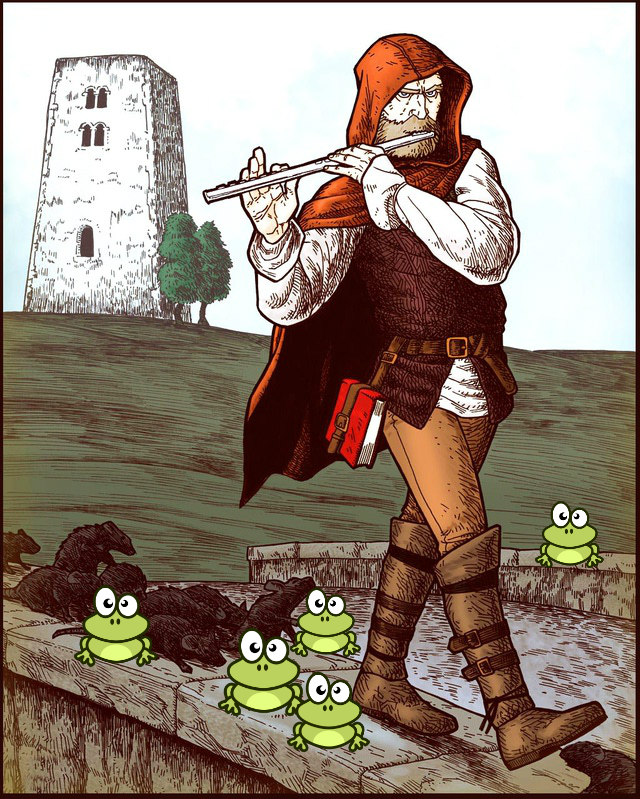I initially thought that Rat Catcher's Day was set aside to honor those in the pest-conrol industry, but when I did my research I was pleasantly suprised to find that it had nothing to do with the catching of rats. And thank goodness for that! July 22nd, or Rat Catcher's Day, pays tribute to the legend of the Pied Piper of Hamelin, or the Rattenfänger von Hameln, in German, during the middle ages. Hamelin is a village in Lower Saxony in Germany. The Pied Piper is also called the Pan Piper or the Rat-Catcher of Hamelin. By whatever name you choose to call him, the story goes that a piper, dressed in multi-colored (pied) clothing was hired by the town's people of Hamelin to lure the rats away with his magic pipe (flute). When the citizens refused to pay the piper for his work, he retaliates and lures the town's children away, just as he had the rats, by using his instument's magical powers. (The story I've been told, since my youth, is that more than a couple of frogs may have also been led astray along the kids.)
The rat and children version of the story became folklore and has appeared in the writings of von Goethe, the Brothers Grimm, and Robert Browning, to name a few.
There are many theories about this tale. One suggests that he was the symbol of hope for the good people of Hamelin who had been attacked by the plague; thus the Pied Pier led all the rats out of town and saved the citizens from this epidemic disease.
The earliest known record of this story came from the Town of Hamelin, itself. The Church of Hamelin had a stained glass window depicting the Piper and his rats. The church dates back to around AD 1300. Although the church was destroyed in 1660, there are several written accounts about the window that have survived.
The earliest written version of this story dates back to 1384 when the account states that, "It's been 100 years since our children have left." Much research has conducted on this story but, to date, no historical evidence exists that the Pied Piper was a real person. At any rate, the rats were added to the story about AD 1559.
Some accounts believe that the children died from disease or from starvation, and that the Piper is a symbolic figure of death. One of the more interesting, and modern, interpretation suggests that the children were lured away by a pagan, or heretic group, to the forests outside of Copenhagen where they were used as part of a ritual dance. The children then perished during a sudden landslide or, perhaps, in the collapse of a sinkhole. Still another version says that the children of Hamelin left to be part of a pilgramage, military campaign, or a Children's Crusdade but were then never returned to their parents.
The story has evolved and changed many times throughout its long history, but it is a well-known tale that even children of today can read. After a brief search on Amazon, I found several copies of this story available for sale. Folklore are stories that get handed down from one generation to another. They are living history. And although I'm not thrilled by this story, it is kind of exciting to read a tale that has been apart of the world's literature, now, for well-over 600 years.
I wish you all a Happy Rat Catcher's Day!

 RSS Feed
RSS Feed